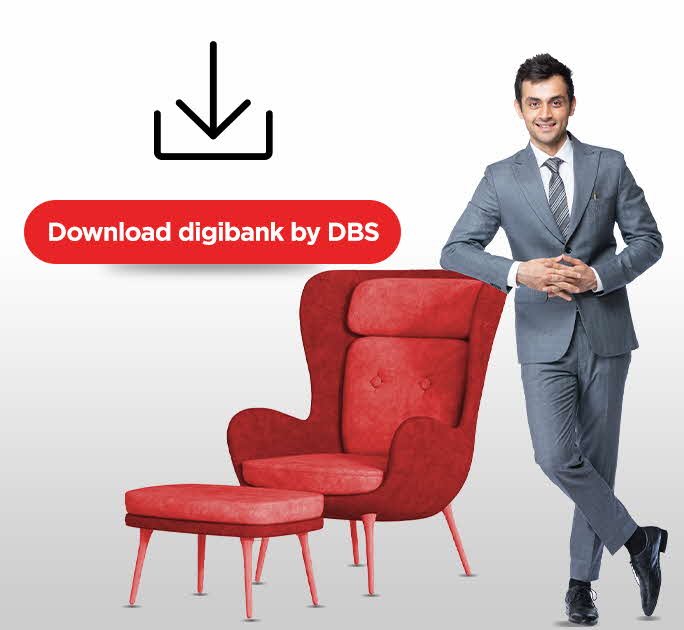- Save
- Invest
- Borrow
- Pay
- More
- Customer Services

ATM Card vs Debit Card: Key Differences Explained
ATM card vs Debit card – comparing the differences
Key Takeaways
- Debit cards have multiple functions; you can use them for cash withdrawals, online transactions etc.
- ATM cards have single-use—cash withdrawals.
- Debit cards give discounts and offer additional benefits.
- You do not get discounts with ATM cards.
- You can use ATM cards at other bank ATMs.
Introduction
Many people ask, is ATM card and debit card same? While they may look similar, there are key differences. This article explains the difference between ATM card and debit card, covering their features, uses, and limitations so you can use your card effectively for withdrawals, purchases, and online transactions.
What is a Debit Card?
A debit card is a card offered by your bank to access your bank account. It is typically linked to a savings, current, or salary account and comes with a 16-digit unique number, CVV, expiry date, and a four-digit PIN for security. The PIN should never be shared or written down and must be memorized for safe use. Unlike an ATM card, a debit card can be used for cash withdrawals as well as purchases and online payments, highlighting one key aspect of the difference between debit card and ATM card.
Benefits of a Debit Card
A debit card offers multiple advantages that make managing your money easier and more convenient.
- Pay directly from your bank account without withdrawing cash.
- Swipe the card at retail stores or use it online by entering card details for purchases.
- Make instant payments for utility bills, phone recharges, DTH, and more.
- Enhanced security features ensure safe transactions.
- Convenient and widely accepted for daily expenses.
- Easily accessible when you open bank account online, making digital fund management simpler.
What is an ATM Card?
An ATM card is a card issued by your bank primarily for cash withdrawals. It is PIN based, with the PIN linked to your bank account. Unlike a debit card, which allows both withdrawals and payments, an ATM card can only be used to withdraw cash. This highlights the key debit card and ATM card difference that users should know when choosing the right card. You can withdraw money from your bank’s ATMs anytime, and also from other bank ATMs up to a specified limit, which may vary by bank. Exceeding this limit at other bank ATMs may incur a nominal fee. All withdrawals are reflected in your account in real-time.
Benefits of an ATM Card
Using an ATM card offers simple and secure access to cash when you need it.
- Withdraw cash from your bank’s ATMs anytime.
- Access funds from other bank ATMs within specified limits.
- Real-time deduction ensures your account balance is always up to date.
- PIN-based security keeps your account protected.
- Simple and focused, ideal for those who only need cash.
- Convenient to start using immediately when you open savings account with your bank.
Debit Card vs ATM Card: What’s the Difference?
Now that we understand the fundamental difference between ATM card and debit card, let us compare their broader aspects. The table below highlights the debit card and ATM card difference in terms of usage and features.
Basic usage
Debit cards come with several features, including withdrawals at ATMs, online payments, and retail shopping, whereas ATM cards are limited to cash withdrawals at ATMs. This illustrates the key difference between ATM and debit card.
Acceptance
Retailers and online payment outlets accept debit cards, allowing for hassle-free shopping. ATM cards are not accepted for shopping purposes.
Fund transfers
While you can link your debit card to third party applications to initiate fund transfers, you cannot transfer funds using ATM cards.
Online purchases and discounts
With debit cards, you can purchase goods and services online and pay your utility bills as well. You may even be eligible for discounts on your card on online purchases and bill payments. But these facilities are not available with ATM cards.
Overdraft facility
While some debit cards offer an overdraft facility, banks generally do not provide overdraft facilities with ATM cards.
EMI options
You can use your debit card to pay EMIs for your various loans, especially consumer purchase loans offered on online shopping websites. You cannot, however, avail yourself of the ATM facility with debit cards.
Additional benefits
Many banks in India offer some additional benefits that can prove highly advantageous to the debit cardholder. These include complementary insurance, access to airport lounges, reward points and cash back, fuel discounts, etc. With ATM cards, no additional benefits are provided.
Similarities Between Debit Cards and ATM Cards
Many people often wonder is ATM and debit card same. While there are clear differences, both share several similarities in how they work.
- Both ATM card and debit card are issued by banks and are directly linked to your savings or current account.
- They allow you to withdraw cash securely from ATMs using a PIN.
- Transactions made with either card is reflected in your bank account in real-time.
- ATM and debit card are same in terms of basic security features, such as requiring a PIN for authentication.
- Both provide convenient access to your funds without needing to visit the bank branch.
How do debit cards work?
Having compared debit vs ATM card, let us understand how the former works. Debit cards work both online and offline.
You can quickly and safely pay for the goods or services bought offline using a debit card. Once the retailer enters the purchase amount, you, as the cardholder, have to key in the four-digit secret PIN. The merchant or the service provider employs a card machine, also called point of sale (PoS). The device reads your debit card linked to your bank account and instantly deducts the amount. The bank then processes the payment request on the card machine.
As for online usage, you need to enter your 16-digit debit card number, the expiry date and the three-digit CVV number. The bank sends you a One-Time Password or OTP on your registered mobile number (RMN) linked to your bank account, which you must enter to authenticate the transaction.
Security Considerations
Using an ATM card and debit card offers convenience, but it also comes with risks if not handled carefully. Since these cards are directly linked to your bank account, any unauthorized use can result in immediate financial loss. Practicing safe habits ensures your transactions remain secure.
Tips for Safe Transactions
- Never share your PIN or write it down anywhere.
- Change your PIN regularly and avoid obvious numbers like birth dates.
- Always shield the keypad while entering your PIN at ATMs or POS machines.
- Do not use ATMs located in poorly lit or suspicious areas.
- Check for card skimmers or unusual devices before inserting your card into an ATM.
- Avoid using public Wi-Fi when making online payments with your card.
- Immediately report to your bank if your card is lost, stolen, or if you notice suspicious transactions.
Conclusion
When it comes to ATM card vs debit card, the differences are quite clear in terms of features and usage. They are not interchangeable, and each serves a specific purpose. It is advisable to open a bank account that provides the benefits of both ATM card and debit cards. Together, these cards remain integral to modern banking and make everyday transactions simple and convenient.
Choose DBS Bank for your savings journey and enjoy attractive savings account interest rates of up to 5.5% p.a. with a feature-rich Savings Account.
*Disclaimer: This article is for information purposes only. We recommend you get in touch with your income tax advisor or CA for expert advice.







